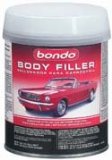In today’s post, I’m going to talk about how to repair a door that won’t latch. This stems from a call I recently received from a customer complaining that her kitchen door would not latch when closed. I went out to take a look and see what I would need to get their problem solved. Upon arrival, I found that the striker plate was 1/4″ too high for the bolt of the lockset to enter the opening so the door could not latch. The customer had been using only the deadbolt for sometime to keep the door closed and was ready to get the problem corrected.
The first thing I did was mark the top and bottom of the bolt on the striker plate. I did this by opening the door just enough to expose the bolt and the striker plate. Once these marks were in place, I opened the door fully to measure how much the bolt was missing the hole in the striker plate.
When I had the measurements I needed, I removed the striker plate to gain access to the wood of the door facing. Because the opening was off so much, I would have to fill the existing mortise completely and remortise the striker and redrill the striker hole. My favorite filler material for this type of job is ordinary automotive body filler, also known as Bondo.
 Bondo is fast setting and hardens without shrinking, which makes a job like this one quick and easy. For me the correct mix of Bondo and hardener is to place Bondo on my mixing board and let it form a circular shaped puddle. I then squeeze out a strip of hardener about 1/2 the width of the circle on top of the Bondo. I then mix the two thoroughly until the entire mix is light pink, if using red hardener, or light blue, if using blue hardener.
Bondo is fast setting and hardens without shrinking, which makes a job like this one quick and easy. For me the correct mix of Bondo and hardener is to place Bondo on my mixing board and let it form a circular shaped puddle. I then squeeze out a strip of hardener about 1/2 the width of the circle on top of the Bondo. I then mix the two thoroughly until the entire mix is light pink, if using red hardener, or light blue, if using blue hardener.
With a small putty knife, I filled in the old mortise, making sure to leave the filler about 1/8″ above the surface of the wood. The reason for this is to enable me to sand the filler level with the surface of the wood when it has set. When Bondo is going through the chemical setting process, it goes through a rubber stage of set. This stage is immediately after the heat has started to dissipate. When Bondo is in this rubber stage, it is easy to shape with an automotive body rasp.
When the filler had completely hardened, I sanded the filler, remortised for the striker plate, drilled the bolt opening, screwed the striker plate in place, and touched up the reparied are with white paint. The entire repair took about 30 minutes and I was on my way with another happy customer.
Here are some tips when using Bondo body filler.
- Bondo has a strong odor so use only in a well ventilated area.
- Bondo sticks to anything, even glass, so protect areas you don’t want it stuck to.
- Bondo get hot when setting.
- Wear latex gloves, nitrile gloves if you have an allergy to latex, to keep Bondo off your skin.
- Shape it during the firm rubber stage. It takes practice to know when this stage occurs. Too early and it will peel off. Too late and it is as hard as chinese arithmetic.
- Wear a dust mask when sanding the hardened Bondo.
Now that you know how to repair a door that won’t latch, the next time you have this problem, get a can of Bondo and tackle the job yourself. Until next time, stay safe, work hard, and as always, thanks for stopping by MVB Crafts.
Regards,

P.S.
You can purchase Bondo and thousands of other products from Amazon simply by clicking the link. When you make your purchase through MVB Crafts, you will be helping to support this site and allowing us to provide you with quality content.
Thanks.

